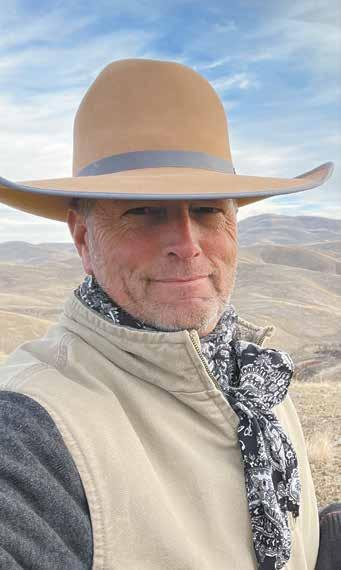Authors: Felix Ratcliff, Devii Rao, Sheila Barry, Luke Macaulay, Royce Larsen, Matthew Shapero, Shane Dewees, Max Moritz, Rowan Peterson, and Larry Forero
Benefits of Cattle Grazing for Reducing Fire Fuels and Fire Hazard The widespread and severe wildfires in California during the past several years highlight the importance of understanding how land management practices such as cattle grazing affect wildfire risk. The California Cattle Council recently funded a UC Cooperative Extension project to evaluate how much fine fuel (grasses and other plants) are eaten by cattle on rangelands, and how this may affect wildfire behavior. These results have not yet been published, but preliminary results are presented here.
Cattle Numbers The study found that about 1.8 million beef cattle grazed California’s rangelands, which include grasslands, oak woodlands, and shrublands, in 2017. Beef cows were by far the most abundant beef cattle class, with 677,000 on range in the state. This was followed by steers, heifers, and bulls.
Fuel Removal by Cattle Beef cattle are found grazing in every county in California, except San Francisco and they consumed 11.6 billion pounds of fuel in 2017. Our analysis which was based on county crop reports, Agricultural Census data, and UC Cooperative Extension data showed that cattle consumed vegetation across about 19.4 million acres of rangeland, primarily privately-owned. However, some grazing also occurs on federally-owned and other public lands too, especially in the mountain and desert regions of the state. The amount of fuel consumed per acre varied greatly based on region (Figure 1). The average amount of fuel removed across grazed rangelands in the state was 596 pounds per acre. This number varied from 174 pounds per acre in the southeast interior region to 1020 pounds per acre in the San JoaquinSierra Region (Figure 2).
Figure 1. Beef cattle grazing regions of California
Fine fuel reduction on any given ranch can differ greatly (either higher or lower) from the region-wide estimates in this study. Figures 3, 4, and 5 show examples of 500, 1,200, and 3000 lbs./ acre of grassland vegetation. These fuel removal estimates are based on the best available data, but this data does not describe the complex details and variation of cattle grazing across the state. There is a need for more consistent and accurate accounting of cattle numbers and grazed acres across the state to better understand grazing’s impact on fire fuels.
These regional values of fuel removal are much lower than the amount of vegetation or forage that grows naturally in these regions in most years. Valley grasslands in the interior of the state generally produce 2000 pounds of forage per acre or more in an average year (Becchetti et al. 2016, Bartolome 1987). Coast range grassland sites in central and northern California generally produce more than 3000 pounds of forage per acre (Larsen et al. 2020, Becchetti et al. 2016). Coastal prairie sites can be highly productive, producing more than 4500 pounds per acre on average in the central coast (Larsen et al. 2020). The highest
production years can see double the average production in any given region, and the lowest production years can be less than 25% of average production. The relatively low amounts of fuel removal reflect conservative stocking strategies, which are used by many ranchers across the state as a way to guard against drought and the unpredictable nature of forage production (Macon et al. 2016). Influence of Cattle Grazing on Wildfire Behavior Maintaining flame lengths below four feet is often cited as a critical threshold that allows fire fighters to safely access an area from the ground without heavy equipment (Andrews and Rothermel 1982). Fire behavior models developed for this study suggest that maintaining fine fuels at or below 1200-1300 pounds per acre during spring and summer will keep flame lengths below four at wind speeds up to 40 mph. This number is affected by other factors however, and during very dry weather conditions, fine fuels may need to be kept at or below 800 pounds per acre to keep flame lengths below 4 feet. These numbers are useful for interpreting the impacts of reducing fuel levels, but they still need to be experimentally validated in California.
Figure 2. Pounds per acre of fuel reduction on grazed rangelands in each region, based on county crop reports
28 APRIL 2022
The Progressive Rancher
www.progressiverancher.com


















